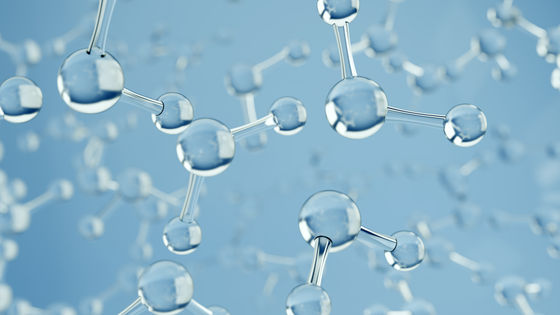``Artificial photosynthesis system'' that produces fuel with 10 times more efficiency has appeared, and applications such as pharmaceutical production are also being considered

A research team at the University of Chicago in the United States has announced an `` artificial photosynthesis system '' that synthesizes fuels such as ethanol and methane from carbon dioxide and water. It is reported that a new artificial photosynthetic system using enzymes was able to produce energy with 10 times the efficiency of the conventional one.
Biomimetic active sites on monolayered metal–organic frameworks for artificial photosynthesis | Nature Catalysis
Chemists create an 'artificial photosynthesis' system that is 10 times more efficient than existing systems
https://news.uchicago.edu/story/chemists-create-artificial-photosynthesis-system-10-times-more-efficient-existing-systems
New 'artificial' photosynthesis is 10x more efficient than previous attempts | Live Science
https://www.livescience.com/artificial-photosynthesis-fuels
Humankind has obtained energy from fossil fuels for the past two centuries, but this is energy that life on earth has stored through photosynthesis over hundreds of millions of years, not energy produced by human hands. . In addition, carbohydrates produced by photosynthesis in the natural world are an important energy source for living things, but they are not suitable as an energy source for automobiles and power plants.
Regarding these issues, Wenbin Lin, a scientist at the University of Chicago, said, ``The biggest problem that many people don't realize is that even nature has no way to cover the amount of energy that humans use. There is a shortage, so we have to create something that surpasses the natural world.'

In order to generate energy that exceeds photosynthesis by human hands, a research team at the University of Chicago first started developing a metal-
Furthermore, Mr. Lin and his colleagues added enzymes, that is, amino acids, which were not found in conventional artificial photosynthesis systems, to MOF, and conducted experiments to promote chemical reactions by photocatalysis. As a result, it was found that amino acids promote the reduction reaction of carbon dioxide and the oxidation reaction of water more efficiently.
The research team calls this material a metal–organic framework-based artificial enzyme (MOZ). According to the announcement, MOZ can synthesize methane with 10 times the efficiency of conventional artificial photosynthesis systems.

However, making enough methane to use as fuel requires more research. “To make the amount of methane we use, we would have to scale up many orders of magnitude,” Lin said. We were able to clarify the mechanism at the molecular level. Deepening our understanding of the process of artificial photosynthesis is an important step in scaling up.'
In addition, the method developed by the research team may be useful for the production of useful substances such as pharmaceuticals even in small amounts. ``There are many commonalities in the basic processes of synthesizing chemicals.The technology to develop excellent chemicals is expected to be applied in many systems,'' said Mr. Artificial photosynthesis. He expressed the view that it could be a clue to solving not only energy problems but also problems such as shortages of medical supplies.
Related Posts:
in Science, Posted by log1l_ks







